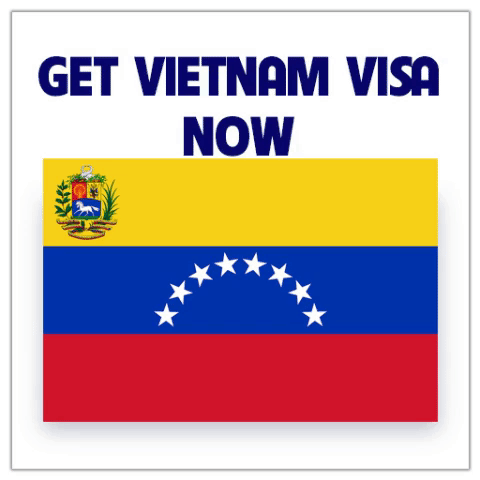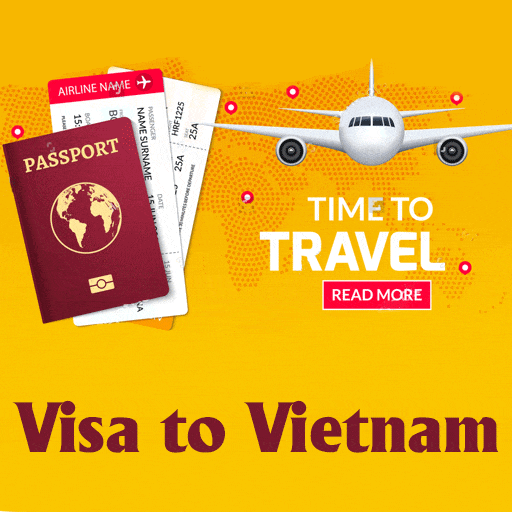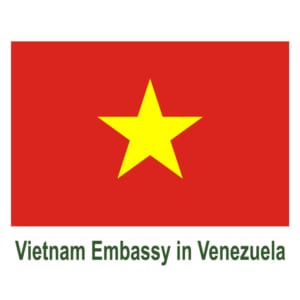Traveling to Vietnam with E-Visa – Checklist for Swiss Tourists requires meticulous planning and understanding of the requirements. This guide ensures Swiss citizens are well-prepared for their Vietnamese adventure, covering everything from E-Visa applications to essential travel tips.
Navigating Vietnam’s E-Visa: A Swiss Tourist’s Comprehensive Guide
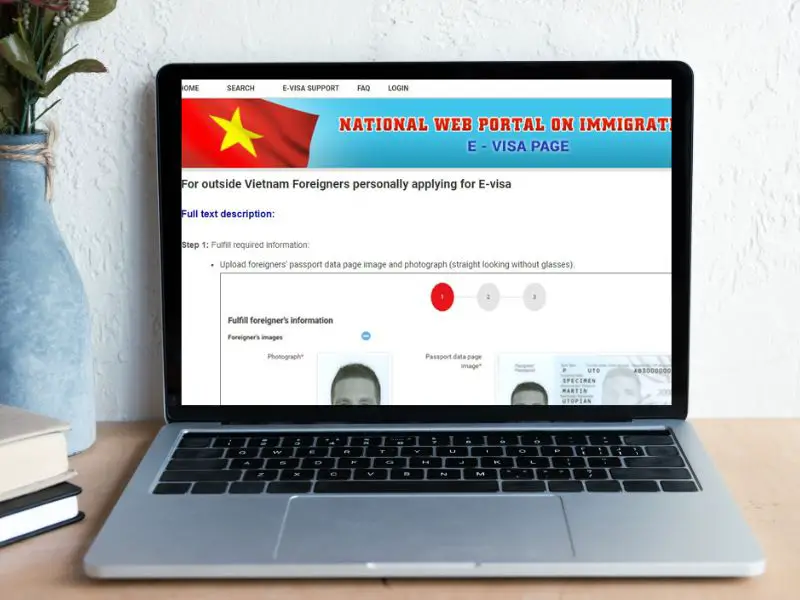
Before embarking on your Vietnamese adventure, mastering the E-Visa process is paramount. This section offers a comprehensive overview, ensuring a smooth and hassle-free application experience. Understanding the intricacies of the E-Visa system can significantly reduce stress and allow you to focus on the excitement of your upcoming travels.
Understanding the Vietnam E-Visa System
The Vietnam E-Visa system provides a convenient way for Swiss citizens to obtain a visa for tourism, business, or other permitted purposes. Unlike traditional visa applications that require visiting an embassy or consulate, the E-Visa process is entirely online. This streamlined approach significantly reduces processing times. Familiarize yourself with the official E-Visa website, which is the only legitimate portal for applying. Avoid unofficial websites offering “assistance” as they often charge exorbitant fees and may not be reliable. The official website will provide you with access to the application form, payment portal, and information on required documents.
The main advantage of the E-Visa is its accessibility. You can apply from the comfort of your own home, at any time that is convenient for you. This is especially beneficial for Swiss citizens living in remote areas or those with busy schedules. Furthermore, the online system allows you to track the progress of your application, providing you with peace of mind. Once approved, the E-Visa is sent to you electronically, which you can then print out and present upon arrival in Vietnam.
The E-Visa is valid for a single entry within a specified period, typically 30 days. This means you can only enter Vietnam once using the E-Visa, and the validity period cannot be extended. If you plan to visit Vietnam multiple times or stay for longer than 30 days, you need to consider alternative visa options, such as applying for a longer-term visa through the Vietnamese embassy or consulate in Switzerland. In addition, note that the E-Visa is not valid for all entry points into Vietnam. Check the list of eligible border crossings, airports, and seaports on the official website before planning your travel.
Applying for Your E-Visa: A Step-by-Step Approach
The application process for a Vietnam E-Visa is relatively straightforward, but it requires attention to detail. The first step is to gather all the necessary documents. This typically includes a scanned copy of your passport bio page, a digital passport-sized photograph, and information about your travel itinerary, such as your arrival and departure dates, accommodation details, and points of entry and exit. Ensure your passport has at least six months of validity remaining from your planned date of entry into Vietnam.
Next, visit the official E-Visa website and carefully complete the online application form. Provide accurate information, as any discrepancies could lead to delays or rejection. Once you have filled out the form, double-check all the details before submitting. After submission, you will be required to pay the E-Visa fee using a valid credit or debit card. Keep a record of your application reference number, as you will need it to check the status of your application. Processing times typically range from three to five working days, but it is advisable to apply well in advance of your travel dates to allow for any unforeseen delays.
Once your E-Visa is approved, you will receive an email notification with a PDF attachment. Print out a copy of the E-Visa and keep it with your passport. You will need to present both documents to immigration officials upon arrival in Vietnam. It is also a good idea to keep a digital copy of your E-Visa on your phone or tablet, just in case. Remember to check all the information on the E-Visa, such as your name, passport number, and validity dates, to ensure it is accurate. If you notice any errors, contact the E-Visa support team immediately for assistance.
Potential Challenges and How to Overcome Them
While the E-Visa process is generally smooth, some challenges may arise. Technical issues with the website, incorrect information provided in the application, or delays in processing times are all potential hurdles. To mitigate these risks, ensure you have a stable internet connection when applying and double-check all the information you provide. Start the application process well in advance of your travel dates to allow for any delays.
If you encounter technical issues with the website, try using a different browser or computer. If that doesn’t work, contact the E-Visa support team for assistance. If you realize you have made a mistake in your application, contact the support team immediately to see if it can be corrected. In some cases, you may need to reapply. If your E-Visa is delayed, check the status of your application online. If it has been more than five working days, contact the support team for an update.
It is important to be aware of scams and fraudulent websites offering E-Visa services. Only use the official E-Visa website to avoid being ripped off. Be wary of websites that ask for exorbitant fees or promise guaranteed approval. If you are unsure whether a website is legitimate, check its URL and contact details against the official E-Visa website. By being proactive and taking these precautions, you can minimize the risk of encountering challenges and ensure a smooth E-Visa application process.
Vietnam E-Visa Requirements for Swiss Citizens: A Pre-Departure Checklist
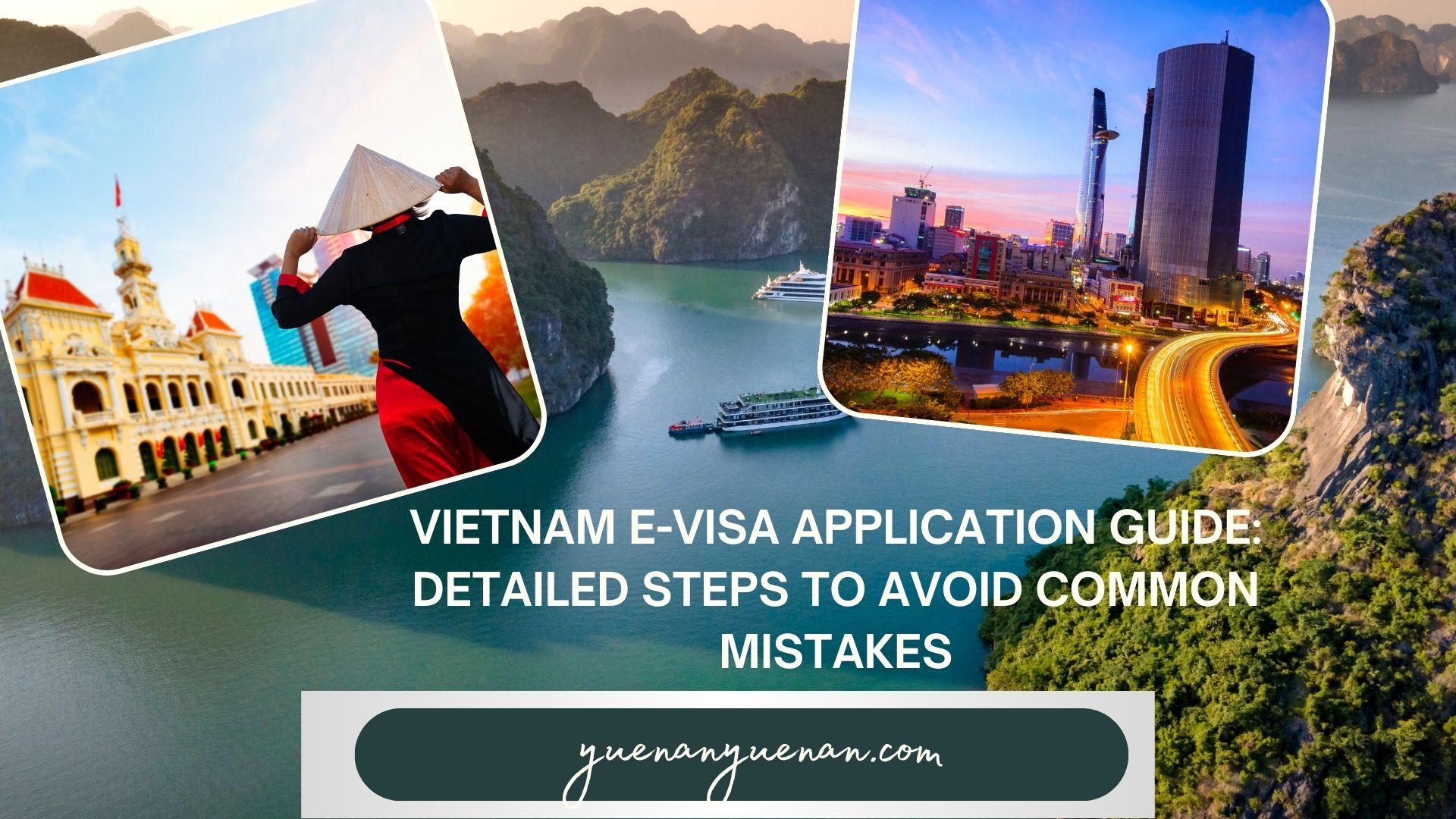
This section provides a meticulously crafted checklist designed to help Swiss citizens gather all necessary documents and meet the precise requirements for a Vietnam E-Visa. Proper preparation can significantly streamline the application process and prevent unnecessary delays.
Passport Specifics and Digital Photo Essentials
Your passport serves as your primary identification document, and its validity is crucial for obtaining a Vietnam E-Visa. Ensure your passport has a minimum validity of six months from your intended date of entry into Vietnam. This is a standard requirement for most countries and is strictly enforced. In addition, make sure your passport has at least two blank pages available for entry and exit stamps.
When preparing your digital passport-sized photograph, adhere to the specific requirements outlined on the official E-Visa website. The photo should be recent, clear, and taken against a plain white background. Your face should be fully visible and free of any obstructions, such as sunglasses or hats. The dimensions of the photo are typically 4×6 cm, and it should be saved in JPEG format. Failure to meet these specifications could result in your application being rejected.
Consider having your digital photo taken by a professional photographer to ensure it meets all the necessary requirements. Alternatively, you can use online tools to adjust the size and format of your photo. However, be sure to check the final result carefully to ensure it meets all the specifications. It’s better to be safe than sorry when it comes to these critical documents.
Accommodation and Travel Itinerary Details
Having a clear and confirmed travel itinerary significantly strengthens your E-Visa application. Include detailed information about your accommodation, such as the names and addresses of the hotels or guesthouses where you will be staying. It is advisable to book your accommodation in advance and obtain confirmation emails or reservation numbers.
Also, provide accurate information about your arrival and departure dates, points of entry and exit, and any internal travel plans you may have within Vietnam. This helps the immigration authorities assess the purpose of your visit and ensure that it aligns with the E-Visa’s validity period. If you plan to visit multiple cities or regions within Vietnam, provide a detailed itinerary outlining your travel route and mode of transportation.
Detailed travel plans showcase your preparedness and genuine intention to adhere to the visa regulations. While flexibility is important, having a solid plan allows for a smoother E-Visa process and reduces the likelihood of complications. If you need to make changes to your itinerary after obtaining your E-Visa, it is best to consult with the Vietnamese embassy or consulate for guidance.
Other Supporting Documents: When and Why
While a passport, digital photo, and travel itinerary are the primary requirements for a Vietnam E-Visa, certain situations may warrant the submission of additional supporting documents. These documents can help further substantiate your application and address any potential concerns the immigration authorities may have.
For example, if you are traveling to Vietnam for business purposes, you may be required to provide a letter of invitation from a Vietnamese company or organization. This letter should detail the purpose of your visit, the duration of your stay, and the contact information of the host company. If you are traveling for tourism, you may want to include copies of your flight tickets or tour bookings.
In some cases, you may also be asked to provide proof of sufficient funds to cover your expenses during your stay in Vietnam. This could include bank statements, credit card statements, or traveler’s checks. The amount of funds required will depend on the length of your stay and the nature of your activities. It is always a good idea to have these documents readily available in case they are requested.
The need for additional supporting documents will vary depending on your individual circumstances. If you are unsure whether you need to provide any additional documents, it is best to consult with the Vietnamese embassy or consulate for guidance. Being prepared with all the necessary documents can expedite the E-Visa process and increase your chances of approval.
Seamless Travel to Vietnam: E-Visa Application Tips for Swiss Nationals

This section offers practical tips and strategies to ensure a smooth and effortless E-Visa application experience for Swiss nationals. Attention to detail and proactive planning can significantly enhance the chances of a successful outcome.
Choosing the Right Time to Apply
Timing is crucial when applying for a Vietnam E-Visa. Applying too early or too late can both present challenges. Applying too early could mean your E-Visa expires before your travel dates, while applying too late could result in delays that jeopardize your trip. A good rule of thumb is to apply four to six weeks before your intended date of entry into Vietnam.
This timeframe allows ample time for processing while ensuring that your E-Visa’s validity period aligns with your travel dates. It also provides a buffer in case of any unforeseen delays or complications. Before submitting your application, double-check your travel dates and the E-Visa’s validity period to ensure they align.
Consider the time of year when planning your application. Peak tourist seasons may result in longer processing times due to increased demand. If you are traveling during these periods, it is advisable to apply even further in advance. Additionally, be aware of any national holidays or public holidays in Vietnam, as this may also affect processing times.
Common Application Mistakes to Avoid
Many E-Visa applications are rejected due to simple errors or omissions. To avoid these pitfalls, carefully review your application before submitting it. Pay close attention to details such as your name, passport number, date of birth, and other personal information. Ensure all the information you provide matches the information on your passport.
Also, be sure to provide accurate and complete answers to all the questions on the application form. Leaving blanks or providing vague or ambiguous answers can raise red flags and lead to delays or rejection. If you are unsure how to answer a particular question, consult with the Vietnamese embassy or consulate for guidance.
Another common mistake is submitting a poor-quality passport photo. Make sure your photo meets all the specified requirements, such as size, background, and resolution. A blurry, distorted, or poorly lit photo can be grounds for rejection. Finally, be wary of scams and fraudulent websites offering E-Visa services. Only use the official E-Visa website to avoid being ripped off.
Mastering the Online Application Form
The online application form is the gateway to obtaining your Vietnam E-Visa. To navigate it successfully, take your time and read each question carefully before answering. Use clear and concise language, and avoid using abbreviations or jargon. Populate all the fields carefully, if you are not sure how to answer a question, contact the E-visa support team for help. The online application form is pretty easy to use, all you have to do is to be careful.
Provide accurate information about your travel plans, including your arrival and departure dates, points of entry and exit, and accommodation details. This information helps the immigration authorities assess the purpose of your visit and ensure that it aligns with the E-Visa’s validity period. Double-check all the information you provide before submitting the application to ensure it is accurate and complete.
If you encounter any technical issues with the online application form, such as error messages or unresponsive buttons, try using a different browser or computer. You can also contact the E-Visa support team for assistance. Remember, the accuracy and completeness of your application are crucial for a successful outcome, so take your time and pay attention to detail.
Vietnam E-Visa for Swiss Travelers: Avoiding Common Pitfalls
This section highlights common mistakes and complications that Swiss travelers encounter when applying for a Vietnam E-Visa and offers practical solutions to avoid these potential setbacks. Proactive awareness and careful planning are key.
Insufficient Passport Validity and the Domino Effect
One of the most common reasons for E-Visa rejection is insufficient passport validity. As previously mentioned, your passport must have at least six months of validity remaining from your intended date of entry into Vietnam. Failure to meet this requirement will result in your application being rejected, and you will need to renew your passport before reapplying.
The domino effect of insufficient passport validity can extend beyond the E-Visa application. If your passport is close to expiring, you may also encounter difficulties booking flights or accommodation. Some airlines and hotels may refuse to accept bookings if your passport is not valid for a sufficient period. To avoid these issues, check your passport’s expiration date well in advance of your travel plans. Renew your passport as soon as possible if it is due to expire soon.
Another related issue is damaged or defaced passports. If your passport is damaged or defaced in any way, it may not be accepted by immigration officials. This could result in you being denied entry into Vietnam, even if you have a valid E-Visa. To avoid this, inspect your passport carefully before traveling. If it is damaged or defaced, replace it as soon as possible.
Data Inconsistencies: The Devil is in the Details
Data inconsistencies between your application and your passport can also lead to E-Visa rejection. Even a minor discrepancy, such as a misspelled name or an incorrect date of birth, can raise red flags and delay or derail your application. To avoid these issues, double-check all the information you provide on the application form to ensure it matches the information on your passport.
Pay close attention to details such as the spelling of your name, your date of birth, your passport number, and your place of birth. If you have a hyphenated name or a middle name, make sure you enter it correctly. If there are any discrepancies between your application and your passport, contact the E-Visa support team immediately to see if it can be corrected.
Another common mistake is entering your arrival and departure dates incorrectly. Make sure you provide the correct dates, as this information is used to determine the validity period of your E-Visa. If you need to make changes to your travel plans after obtaining your E-Visa, it is best to consult with the Vietnamese embassy or consulate for guidance.
Technical Glitches and System Outages: Plan B Strategies
Technical glitches and system outages are an inevitable part of the online application process. While the Vietnam E-Visa website is generally reliable, it is not immune to these issues. If you encounter a technical glitch or system outage, don’t panic. Take a deep breath and try the following strategies:
First, try using a different browser or computer. Sometimes, technical issues are specific to a particular browser or operating system. If that doesn’t work, try clearing your browser’s cache and cookies. This can often resolve minor technical issues. If you are still having trouble, try accessing the website at a different time of day. Peak hours may result in slower response times and increased likelihood of technical issues.
If none of these strategies work, contact the E-Visa support team for assistance. They may be able to help you troubleshoot the issue or provide an alternative method of submitting your application. It is always a good idea to have a Plan B in case of technical issues. This could include applying for your E-Visa at a different time, using a different computer, or contacting the support team for assistance.
Essential Checklist: Preparing for Your Vietnam Trip with an E-Visa (Swiss Edition)
This section provides a detailed checklist to ensure that Swiss travelers are fully prepared for their Vietnam trip, covering everything from pre-departure arrangements to what to expect upon arrival.
Pre-Departure Preparations: Last-Minute Checks
Before you embark on your trip to Vietnam, there are several last-minute checks you should perform to ensure a smooth and hassle-free experience. First, double-check that your E-Visa is still valid and that all the information on it is accurate. Print out a copy of your E-Visa and keep it with your passport.
Next, inform your bank and credit card companies about your travel plans. This will help prevent your cards from being blocked due to suspicious activity. Also, check your travel insurance policy to ensure it provides adequate coverage for medical expenses, travel disruptions, and other unforeseen events.
Pack appropriately for the climate and activities you plan to undertake in Vietnam. Consider comfortable walking shoes, lightweight clothing, and a hat or sunglasses. If you plan to visit religious sites, be sure to pack modest clothing that covers your shoulders and knees.
Consider purchasing a local SIM card upon arrival in Vietnam. This will allow you to stay connected with family and friends, access online maps and information, and make local calls at a reasonable price. Finally, familiarize yourself with some basic Vietnamese phrases. This will help you communicate with locals and enhance your overall travel experience.
What to Expect at Immigration: Arrival Process
Upon arrival at a Vietnamese airport or border crossing, you will need to present your passport and E-Visa to the immigration officials. Be prepared to answer questions about your travel plans, such as the purpose of your visit and the duration of your stay. The immigration officials will verify your E-Visa and passport, and they will stamp your passport with an entry visa.
The arrival process is usually straightforward and efficient, but it is important to be patient and respectful. Follow the instructions of the immigration officials and answer their questions truthfully. If you have any questions or concerns, don’t hesitate to ask for clarification.
After clearing immigration, you will proceed to baggage claim to retrieve your luggage. Once you have collected your luggage, you will pass through customs. Declare any items that you are required to declare, such as tobacco, alcohol, or valuable electronics. Be aware of the restrictions on importing certain items into Vietnam, such as certain types of food and plants.
Essential Documents: A Pocket-Sized Summary
To ensure a smooth and hassle-free entry into Vietnam, keep the following essential documents readily available:
- Passport with at least six months of validity remaining
- Printed copy of your Vietnam E-Visa
- Travel insurance policy
- Flight tickets or itinerary
- Accommodation booking confirmations
- Copies of important documents, such as your passport and E-Visa
Having these documents organized and easily accessible will expedite the immigration process and minimize the risk of any complications. It is also a good idea to keep digital copies of these documents on your phone or tablet, just in case. By being well-prepared and organized, you can ensure a smooth and enjoyable entry into Vietnam.
Beyond the E-Visa: Important Travel Information for Swiss Tourists Visiting Vietnam
This section provides essential travel information for Swiss tourists visiting Vietnam, covering aspects such as cultural etiquette, health precautions, safety tips, and local transportation options, enhancing the overall travel experience.
Cultural Sensitivities and Etiquette
Vietnam boasts a rich and diverse culture, and it is important to be aware of and respect local customs and traditions. Dress modestly when visiting religious sites, such as temples and pagodas. Remove your shoes before entering these sites and avoid pointing your feet at Buddha images or other sacred objects.
When interacting with locals, be polite and respectful. Use formal titles such as “ong” (Mr.) and “ba” (Ms.) when addressing older people. Avoid public displays of affection and keep your voice down in public places. Bargaining is common in markets and street stalls, but do so respectfully and with a smile.
Tipping is not customary in Vietnam, but it is always appreciated for good service. A small tip can go a long way in showing your appreciation. Finally, be mindful of your body language. Avoid crossing your arms in front of your chest, as this is considered a sign of disrespect. By being culturally sensitive and respectful, you can enhance your interactions with locals and have a more enriching travel experience.
Health and Safety Considerations
Before traveling to Vietnam, consult with your doctor or a travel health clinic about any necessary vaccinations and health precautions. Common vaccinations include typhoid, hepatitis A, and tetanus. Depending on your travel itinerary, you may also need to consider vaccinations for Japanese encephalitis, rabies, and malaria.
Drink only bottled or purified water, and avoid eating raw or undercooked foods. Be cautious of street food, as hygiene standards may not be as high as in Western countries. Wash your hands frequently with soap and water, or use hand sanitizer. Protect yourself from mosquito bites by wearing long sleeves and pants, using insect repellent, and sleeping under a mosquito net.
Be aware of the potential for petty theft, especially in crowded tourist areas. Keep your valuables secure and avoid displaying expensive jewelry or electronics. Be cautious when using ATMs, and avoid withdrawing large sums of money. Finally, be aware of the traffic conditions in Vietnam. Traffic can be chaotic and unpredictable, so be extra careful when crossing the road.
Local Transportation Options: Navigating Vietnam
Vietnam offers a variety of local transportation options, ranging from taxis and motorbikes to buses and trains. Taxis are readily available in most cities and are relatively affordable. Be sure to use reputable taxi companies and insist on using the meter. Motorbikes are a popular mode of transportation, but they can be dangerous if you are not experienced.
Buses are a cost-effective way to travel between cities and regions. However, bus schedules are not always reliable, and buses can be crowded and uncomfortable. Trains are a more comfortable and convenient option for long-distance travel. Vietnam has a well-developed railway network that connects major cities and regions.
Cyclos and tuk-tuks are also available in some cities, but they are primarily for short distances. Bargain for the fare before getting in, and be aware that they may not be the safest option. For those looking for the most affordable option, public buses in the larger cities are a great option with routes conveniently mapped, but a language barrier might be present. By understanding the various transportation options available, you can navigate Vietnam with ease and efficiency.
Vietnam E-Visa Approved! Next Steps for Swiss Travelers: A Detailed Checklist
This section provides a comprehensive checklist for Swiss travelers after their Vietnam E-Visa has been approved, ensuring all necessary preparations are made for a smooth and enjoyable trip.
Verifying E-Visa Details and Printing Copies
Once your Vietnam E-Visa is approved, carefully verify all the details to ensure accuracy. Check your name, passport number, date of birth, and other personal information. Also, verify the validity period of your E-Visa and the permitted points of entry and exit.
If you notice any errors or discrepancies, contact the E-Visa support team immediately to see if they can be corrected. It is better to address any issues before your travel dates to avoid potential complications upon arrival in Vietnam. Print out multiple copies of your E-Visa and keep them in separate locations, such as your passport, luggage, and digital devices.
Having multiple copies ensures that you have a backup in case one copy is lost or damaged. It is also a good idea to share a copy of your E-Visa with a trusted family member or friend in case of an emergency. By being meticulous and proactive, you can minimize the risk of any issues related to your E-Visa.
Booking Flights and Accommodation
Now that you have your Vietnam E-Visa approved, it’s time to finalize your travel arrangements by booking your flights and accommodation. Shop around for the best deals on flights and consider flying into a major airport such as Hanoi or Ho Chi Minh City. Book your flights well in advance, especially if you are traveling during peak season.
Research and book your accommodation based on your budget and preferences. Options range from budget-friendly hostels and guesthouses to luxurious hotels and resorts. Read reviews from other travelers to get an idea of the quality and service of each accommodation option.
Confirm your bookings with the airlines and hotels to avoid any surprises upon arrival. Also, familiarize yourself with the cancellation policies in case you need to make changes to your travel plans. By taking these steps, you can ensure that your flights and accommodation are secured and that you have a comfortable and enjoyable stay in Vietnam.
Packing Smart: What to Bring and What to Leave Behind
Packing smart is essential for a comfortable and enjoyable trip to Vietnam. Pack lightweight and versatile clothing that is suitable for the warm and humid climate. Consider bringing clothes that can be easily layered, as temperatures can fluctuate throughout the day.
Pack comfortable walking shoes, as you will likely be doing a lot of walking. If you plan to visit beaches or swimming pools, bring a swimsuit and a towel. Don’t forget to pack essential toiletries such as sunscreen, insect repellent, and hand sanitizer. Also, bring any necessary medications, along with a copy of your prescription.
Leave behind any unnecessary items that will weigh you down or take up space in your luggage. Expensive jewelry, bulky electronics, and unnecessary clothing are all items that can be left behind. Consider bringing a small backpack or daypack to carry your essentials while you are out and about. By packing smart and selectively, you can travel light and comfortably.
Swiss Tourists the Vietnam E-Visa: Application, Preparation, and Travel Tips
This section offers a comprehensive overview of the Vietnam E-Visa process, preparation guidelines, and essential travel tips tailored specifically for Swiss tourists, ensuring a seamless and enriching travel experience.
Tailored Tips for Swiss Citizens
Applying for a Vietnam E-Visa as a Swiss citizen requires attention to specific details. Ensure that all information provided matches your Swiss passport exactly, including names and birthdates. Given potential differences in name formats between Swiss and Vietnamese systems, double-check that the order of names is correct.
Swiss citizens should also be aware of currency exchange rates and transaction fees when paying for the E-Visa online. Use a credit card that offers favorable exchange rates and low transaction fees. Consider informing your bank of your travel plans to avoid any issues with your credit card usage in Vietnam.
Before traveling, research the availability of Swiss-specific services in Vietnam, such as consular assistance and medical facilities. Familiarize yourself with the location of the Swiss embassy or consulate in Vietnam in case of an emergency. Finally, learn a few basic Vietnamese phrases to enhance your interactions with locals and show your respect for their culture.
Essential Travel Apps and Resources
Leverage technology to enhance your travel experience in Vietnam by downloading essential travel apps and resources. Consider using translation apps to communicate with locals who may not speak English. Download offline maps to navigate without relying on internet access.
Use transportation apps to book taxis or motorbikes and navigate public transportation. Research and download reputable food and restaurant apps to find local dining options and read reviews from other travelers. Consider using travel guide apps to learn about the history, culture, and attractions of Vietnam.
Stay updated on travel advisories and alerts by following reputable news sources and government websites. Share your travel itinerary with a trusted family member or friend and stay in touch regularly. By using technology wisely, you can enhance your travel experience, stay safe, and informed.
Debunking Common Myths About the Vietnam E-Visa
Several myths and misconceptions surround the Vietnam E-Visa, leading to confusion and anxiety among travelers. One common myth is that the E-Visa is only for tourists. In reality, the E-Visa can be used for various purposes, including tourism, business, and other permitted activities.
Another myth is that the E-Visa guarantees entry into Vietnam. While the E-Visa is a valid travel document, it does not guarantee entry. Immigration officials have the final say on who is allowed to enter the country. Therefore, it is important to meet all the entry requirements, such as having a valid passport and sufficient funds.
Some travelers believe that they can extend their E-Visa while in Vietnam. However, the E-Visa is typically not extendable. If you wish to stay longer than the validity period of your E-Visa, you will need to apply for a different type of visa through the Vietnamese embassy or consulate. By debunking these common myths, travelers can approach the E-Visa process with accurate information and realistic expectations.
Conclusion
Traveling to Vietnam with an E-Visa offers a convenient avenue for Swiss tourists, but it necessitates a comprehensive understanding of the application process, requirements, and potential pitfalls. By carefully following the guidelines, adhering to the checklists, and staying informed about the travel tips provided, Swiss citizens can ensure a smooth, stress-free, and enriching Vietnamese adventure.


